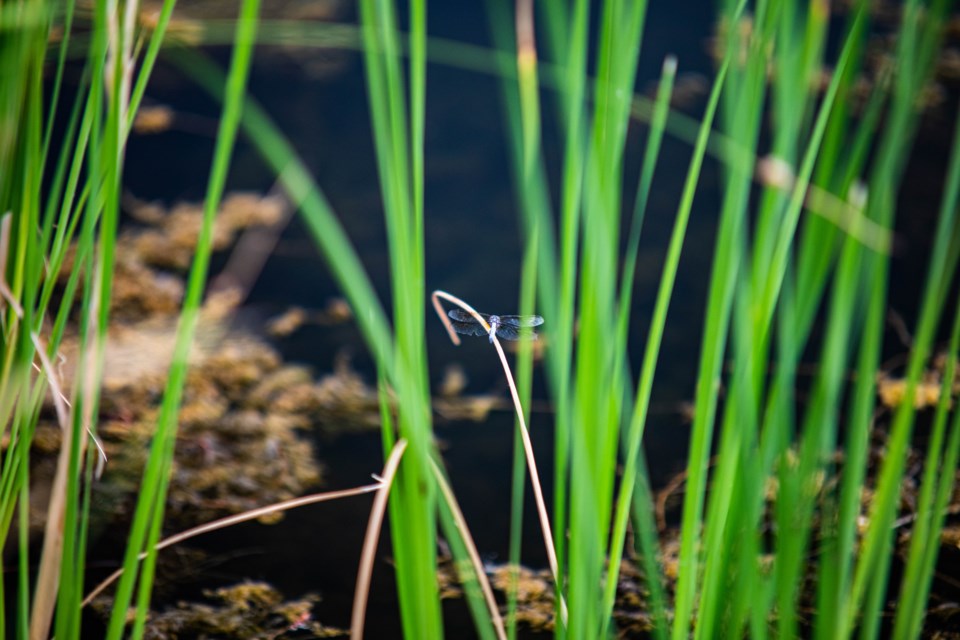Longmont residents can join in with efforts to measure the health of the local environment in the name of science. A partnership between nonprofits Can’d Aid and Trout Unlimited, along with the city of Longmont and Left Hand Watershed Center, is looking for volunteers to catalog aquatic macroinvertebrates along the St. Vrain Creek and its tributaries.
On September 16, volunteers will gather at the Longmont Museum’s north parking lot along with the organizers before splitting into groups and diving into specimen collection along the St. Vrain creek and its tributaries.
“It’s a cool project, because it’s relatively easy and accessible for people to join in and participate no matter what their background or education is,” said Can’d Aid Program Coordinator Abbi Arneson.
Benthic aquatic macroinvertebrates include caddisflies, mayflies, midges, craneflies and other species of insects that live in streams around Longmont. According to Trout Unlimited liaison Barbara Luneau, getting population statistics on these insects helps monitor water quality and fish habitats in the watershed. Bringing in volunteers helps local scientists expand the number of sites beyond what they would have time to monitor themselves, Luneau said.
“It’s an additional line of evidence in water health,” Luneau said. “These insects spend a lot of their life cycle living under a rock on the bottom of a river and they don’t go very far in their lifetime. They are subject to all the fluctuations in water quality that is passing by.”
Aquatic macroinvertebrates give scientists a perspective on sustained conditions over time, and some of the species are sensitive to local pollution and the chemical composition of the water. By tracking insects over time, scientists can determine changes in stream health through population density and species diversity. Midge species like mosquitos are more resistant to pollution, while caddisflies and mayflies are more susceptible to environmental changes.
One of the big concerns for the watershed health came after April’s fuel spill outside Lyons, according to Luneau. Monitoring of fish and insect populations after the spill showed the hazards of petroleum and a reduction in the insects immediately after. Continued monitoring from local scientists has shown a comeback for most species since April, Luneau said.
“It’s another piece of data scientists use, in conjunction with water quality measurements, to understand stream health,” Luneau said.
The data collection, which includes species collection, identification and cataloging, is open to volunteers of all ages. According to Arneson the event is family friendly and all necessary supplies will be provided by the scientists from the city of Longmont and Trout Unlimited, so volunteers need only dress accordingly and bring water.
“It’s a fascinating look at the place we might walk by every day and never have the opportunity to investigate closely,” Luneau said. “It’s a good family opportunity and kids love it. Without a whole lot of effort, this is a way to learn something, give back and have a fun night with the family.”
The volunteer events have filled up quickly, which Luneau finds encouraging. More people have participated in programs and speaking up for their natural resources after the devastating 2020 wildfire season, including the CalWood fire from October of 2020. The groups are also partnering with Boulder County Open Space for a Fire Followers Day in Heil Valley Ranch, another opportunity to help with citizen science and data collection.
The September 8 hike begins at 9 a.m. and, according to Arneson, there are still a few last minute slots open for the 13-mile round trip trek through the CalWood burn scar. Volunteers will use a smartphone app called iNaturalist to photograph and identify plant species regrowing in the wake of the wildfire to understand how the land changes after a disaster.
“Both of these projects are an opportunity for the community to become citizen scientists for the day,” Arneson said. “It’s a low bar for entry and everybody is welcome to join. There’s plenty of space for people to sign up.”



